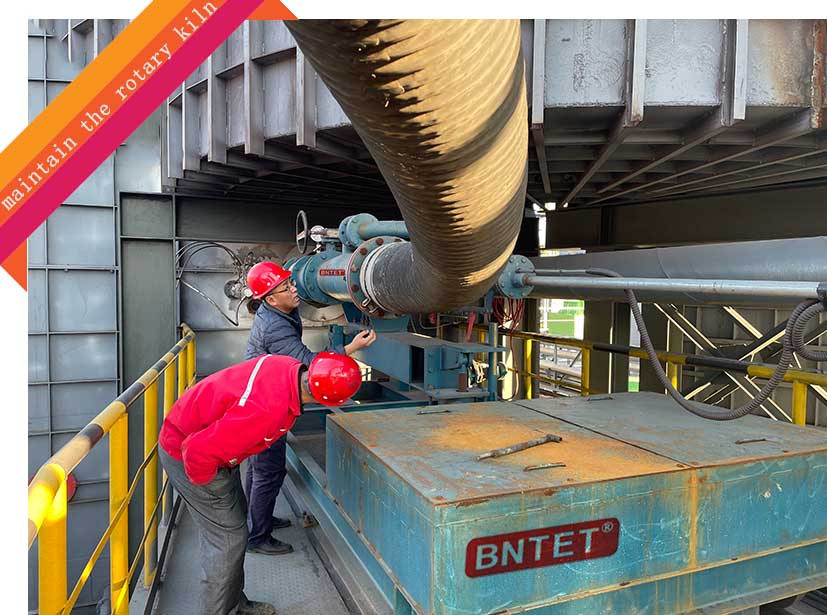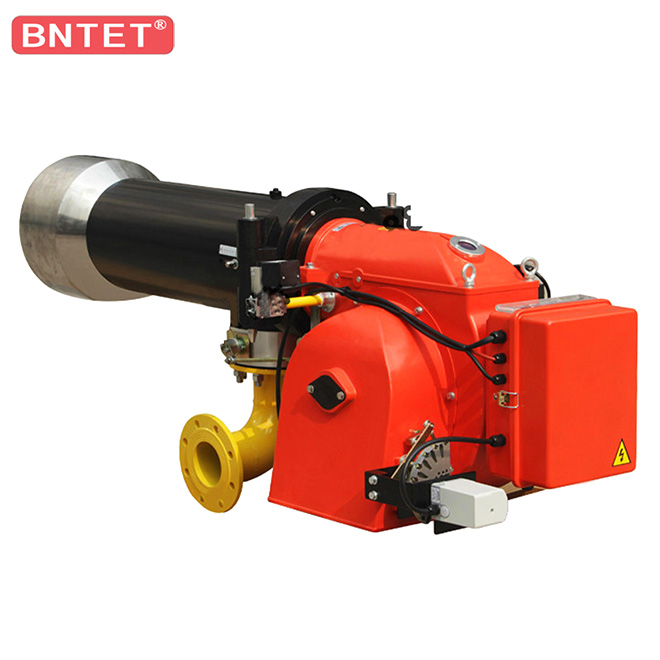Inspecting and maintaining a rotary kiln during operation is essential to ensure its continued performance, prevent breakdowns, and extend its lifespan. Rotary kilns are commonly used in various industries for processes such as cement production, lime calcination, and more. Here are some steps to help you inspect and maintain a rotary kiln during operation:

1. Safety Precautions:
Before performing any inspection or maintenance, ensure that you follow safety procedures and have the necessary personal protective equipment (PPE) in place.
2. Regular Inspection:
Conduct regular visual inspections to identify any visible issues like cracks, deformities, or excessive wear.
3. Temperature Monitoring:
Monitor and record the temperature profiles along the length of the kiln to ensure uniform heating and prevent overheating.
4. Check Alignment:
Verify the alignment of the kiln. Misalignment can cause issues like excessive wear on tires and trunnion rollers. Make necessary adjustments if required.
5. Lubrication:
Keep a regular schedule for lubricating the support bearings and gears. Lubrication is vital for preventing excessive friction and wear.
6. Inspect Refractory Lining:
Check the condition of the refractory lining. Look for signs of wear, erosion, or damage, and plan for timely repairs or replacements.
7. Monitor Shell Temperature:
Continuously monitor the shell temperature to detect hot spots. Hot spots can indicate refractory problems or other issues within the kiln.
8. Check Seals:
Inspect and maintain the seals, including inlet and outlet seals, to prevent air leakage and dust ingress.
9. Check Burner:
Ensure the burner is operating efficiently. Clean the burner regularly and check for any blockages in the fuel and air supply lines.
10. Inspection of Support Rollers and Thrust Rollers:
- Regularly inspect support rollers and thrust rollers for wear and misalignment. Make necessary adjustments or replacements.
11. Combustion Analysis:
- Monitor the combustion process and gas analysis to ensure proper fuel efficiency and combustion control.
12. Inspect Kiln Drive System:
- Regularly check the drive system, including the motor, gearbox, and coupling, for any signs of wear or damage.
13. Clean Out Accumulated Material:
- Periodically remove any buildup of material, known as "ring formation," inside the kiln, which can affect the operation and efficiency.
14. Recordkeeping:
- Maintain detailed records of all inspections and maintenance activities, including dates, findings, and any corrective actions taken.
15. Training and Expert Consultation:
- Ensure that personnel operating and maintaining the kiln are properly trained. Seek expert consultation when dealing with complex issues or for major overhauls.
16. Emergency Procedures:
- Have emergency procedures in place in case of unexpected events such as fires, equipment failures, or kiln shutdowns.
It's crucial to follow the manufacturer's guidelines and recommendations for the specific rotary kiln you are operating. Regular preventive maintenance and timely repairs can significantly reduce downtime and extend the operational life of the kiln. Additionally, a well-maintained kiln will operate more efficiently, saving energy and reducing operational costs.







